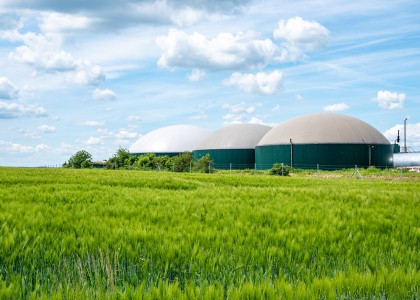As the market for indoor agriculture in North America surges, businesses, growers, and states are finding innovative ways to slash energy costs that demonstrate the potential for much greater savings.
Indoor agriculture — primarily flowers, herbs, lettuces, tomatoes, berries, and cannabis in greenhouses and other buildings — is a rapidly expanding and evolving industry across North America. Known as controlled environment agriculture (CEA), this energy-intensive industry was valued at roughly $47 billion in 2017. While its compound annual growth rate is projected at 3.4% for 2018-2023, some markets anticipate even faster growth, such as cannabis, with a projected 14.4% annual increase through 2025. As the industry expands, so does its energy use.
The latest issue brief in our Emerging Opportunities in Buildings series provides a snapshot of energy consumption in CEA facilities and the significant efficiency opportunities available. Reducing energy costs is vital to the industry’s success, because they account for as much as 25% of operating costs.
Efficiency investments can provide an important boost to the bottom line. While the food and flower crops grown in CEA facilities are typically higher in value than commodity crops, margins for growers are still relatively low. And in the cannabis sector, experience has shown that the high prices common when a state first legalizes adult use tend to collapse after a few years as the market becomes saturated and stabilizes.
Working closely with growers, equipment manufacturers have developed efficient LED lighting systems for different facility types including greenhouses, single-tier container farms, and multi-layer stacked vertical farms. HVAC manufacturers are producing specialized equipment to provide the precise climate, humidity, and airflow required for plant health, pest control, and mold prevention. These technologies allow growers to produce multiple crops over the course of the year and, in some cases, to produce significantly more product per acre of land and gallon of water than traditional agriculture.
These technical developments can reduce energy use by 30-50% or more, but substantial barriers have limited their broad adoption. Like many new industries, CEA faces a lack of access to capital as businesses work to demonstrate profitability to lenders and investors. Capital constraints are even more pronounced for cannabis growers, given federal limitations on banking for the cannabis industry. Limited data on energy use make it harder for growers to weigh the potential benefits of energy efficiency investments against perceived risks associated with adopting new technologies and practices or dealing with the disruptions of a retrofit project.
Fortunately, new programs and initiatives are emerging to address these barriers and support energy efficiency in CEA. Efficiency programs across the United States and Canada are offering technical assistance to growers along with incentives to offset the cost of efficiency investments and address capital constraints. The US Environmental Protection Agency recognizes indoor agriculture facilities that reduce their energy intensity through the ENERGY STAR Challenge for Industry. Additional resources and recognition for these facilities are under consideration.
The DesignLights Consortium has added a specification to its portfolio that helps growers, contractors, programs, and policymakers to identify high-quality, efficient lighting for CEA facilities. Similar specifications could do the same for HVAC and dehumidification equipment used in indoor agriculture.
In the cannabis industry, the Resource Innovation Institute offers educational programming on sustainable cannabis production and a benchmarking tool for growers seeking to gauge their energy performance relative to others. It is also developing best practice guides for lighting and HVAC design and operation.
To date, some degree of separation exists among programs, policies, and other initiatives for energy efficiency and sustainability in cannabis facilities and those in food and flower production. While different crops have different requirements, there are opportunities for collaboration and greater information-sharing across the CEA industry.
Policy can also play a role in reducing the energy impacts of the industry as it continues to grow and mature. State and municipal policymakers are beginning to establish energy use disclosure and other energy efficiency requirements on cannabis facilities. Similar policies for all CEA facilities, offered in conjunction with technical assistance and incentive programs, could help growers improve their viability while reducing their energy and environmental impact.
Today we are also releasing an issue brief on residential dual-fuel program opportunities. While most energy efficiency programs target only one fuel, typically electricity or natural gas, dual-fuel programs have shown that broadening offerings to target multiple fuels can save more energy, reduce program costs, and improve customer satisfaction. This brief highlights best practices for dual-fuel programs, as well as innovative program approaches and technologies that can unlock deeper savings across multiple fuels.
Interested in sponsoring future briefs in the Emerging Opportunities Series? Contact Jennifer Amann or Liz Hale for details.




